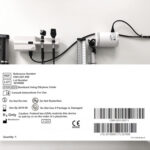Despite years of progress in labeling medical devices with Unique Device Identifiers (UDI), a significant disconnect still exists—especially where it matters most: the point of care.
A recent GS1 US Barcode Assessment, conducted in partnership with a large hospital network, revealed an ongoing challenge in the healthcare supply chain: while manufacturers are largely compliant with barcode labeling requirements, healthcare providers often aren’t scanning those barcodes during clinical workflows. The result? Missed opportunities for patient safety, traceability, and operational efficiency.
The UDI Paradox: Labels Exist, but Scans Don’t Happen
Manufacturers have made significant strides in applying barcodes containing UDI data to medical device packaging. However, when GS1 US visited provider facilities—including operating rooms, central supply, and specialty areas—they found that many of these barcodes were not being scanned, even though most were fully scannable and met quality standards.
So what’s the holdup?
As Beth Wells, UDI and medical device expert at GS1 US, explains:
“It’s not a technology problem—it’s operational. Providers believed barcodes weren’t working, but in many cases, the issue was outdated scanners, improper programming, or confusion over which barcode to scan.”
Key Findings from the Barcode Assessment
-
12,000+ barcodes scanned across various healthcare environments
-
50% of packages had only one barcode, and the majority were scannable
-
27% of additional barcodes could be consolidated or improved easily
-
Older scanners struggled in low light or were misconfigured
-
Providers were unaware of which barcode to scan due to crowded labeling
What’s Standing in the Way?
The assessment identified a blend of technical and cultural obstacles:
-
Operational Confusion: Multiple barcodes per package (due to global regulatory needs) often left clinicians unsure which one to scan.
-
Scanner Limitations: Some facilities used outdated devices not programmed to read certain barcode types.
-
Training Gaps: Providers had not received sufficient education on how or why to scan UDI barcodes.
-
Manual Workarounds: Under pressure, many clinicians defaulted to manual entry—or skipped data capture entirely.
The Bigger Picture: Why UDI Matters
The FDA’s UDI Rule was created to standardize medical device identification and enhance patient safety. When UDI is used properly, it enables:
-
Accurate device tracking
-
Faster recalls
-
Clean, structured EHR integration
-
Improved inventory management
-
Better regulatory compliance
But none of that happens if barcodes aren’t being scanned at the point of use.
What Needs to Change
For Providers:
-
Train frontline staff on how to identify and scan UDI barcodes
-
Assess and upgrade hardware—especially barcode scanners
-
Program devices correctly to read 1D, 2D, and Data Matrix codes
-
Report barcode issues back to manufacturers
For Manufacturers:
-
Consolidate barcodes when possible to reduce clutter
-
Use the ISO UDI symbol to clearly identify the correct barcode
-
Validate and test barcodes regularly for scannability
-
Provide feedback loops and SLAs when providers report scanning issues
Final Thoughts: Closing the Loop
At Dolphin Data Capture, we understand the critical role that barcode scanning plays in healthcare. That’s why we support both manufacturers (with UDI-compliant labeling and integration) and providers (with advanced Zebra scanning technology and education).
The goal? To make scanning a barcode as easy and intuitive as scanning a QR code at a restaurant—so that healthcare professionals can focus on what matters most: patient care.
If your organization is looking to implement or improve UDI scanning workflows, contact us. We’ll help you bridge the barcode divide.



